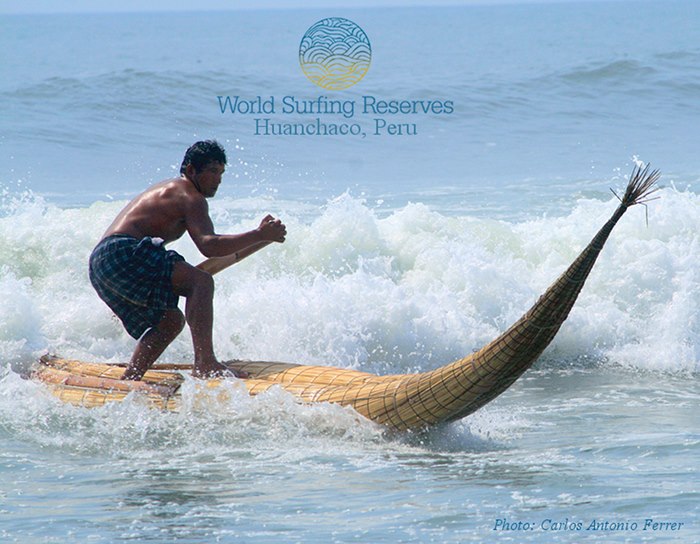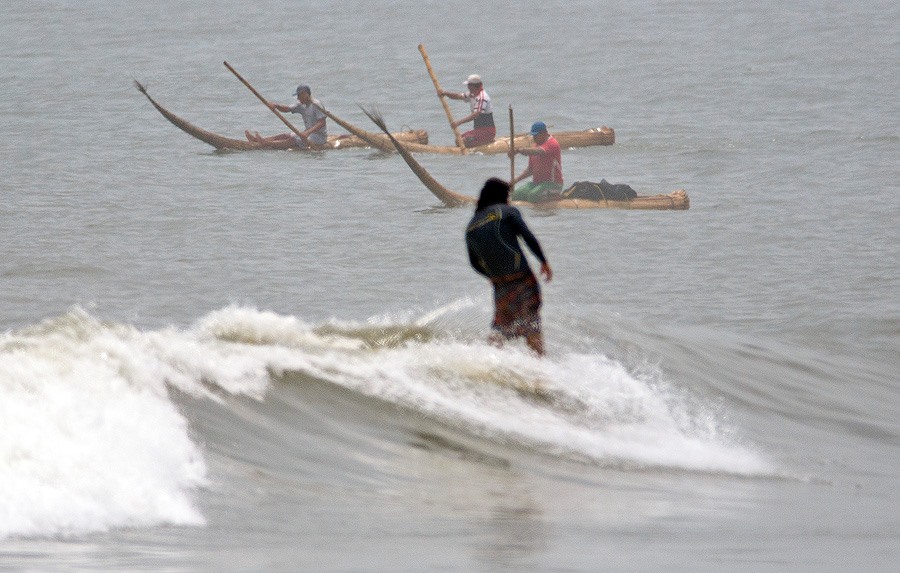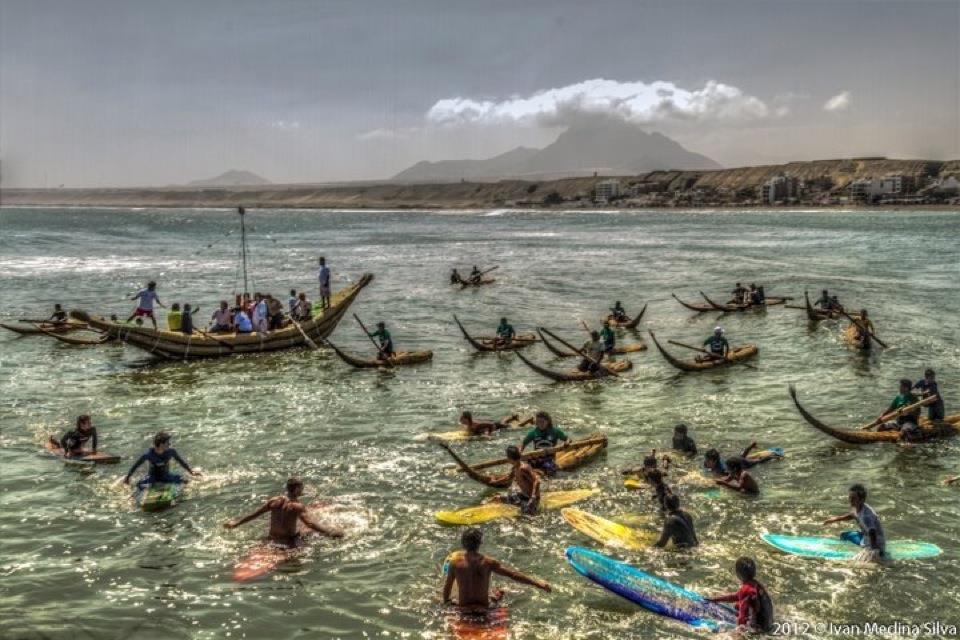The First Surfers in the World
By Ricardo M. Sabogal-Suji
Fishermen-surfers in Huanchaco Beach - Peru can still be seen using gill nets while fishing in their handcrafted reed boats. Mochica ceramic art (ca. 100–800 CE) displays examples of fishermen–surfers riding, paddling, and fishing from these caballitos de totora

A masculine skeleton excavated from a tomb at the archaeological site named Dos Cabezas (ca. 450 CE) in the Jequetepeque River Valley (ca. 70 miles or 110 kilometers north from Huanchaco Beach) presents evidence of his past profession as a fisherman–surfer. Coherent markers on his hands, feet, limb bones, and his axial skeleton show a pattern of occupational position associated with fishing activities from a caballito de totora.

In fact, fishermen–surfers from Huanchaco ride the caballitos de totora in a particular way as they paddle out through the surf. Fishermen–surfers kneel on the small vessels as they work carefully with their nets. They sit cross–legged in the sartorial position in order to manipulate their catch. They surf the waves when they come back from their fishing spots, and their kids surf the waves in small caballitos de totora in order to learn the skills.
Ethnographic, forensic, and iconographic evidence of fishing practice with a caballito de totora demonstrate that the fishermen–surfers from Huanchaco Beach have been in existence for a long time.




